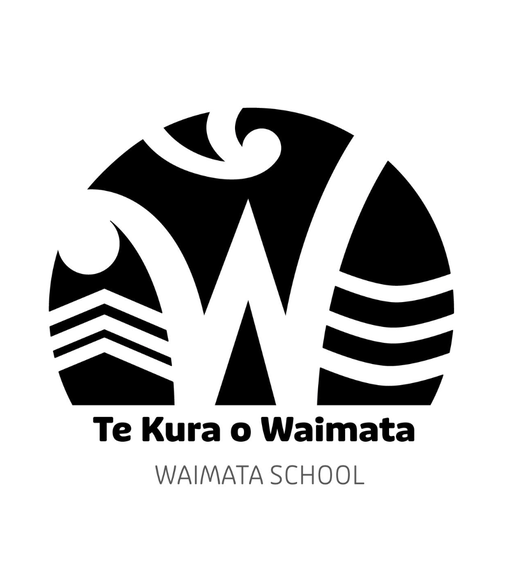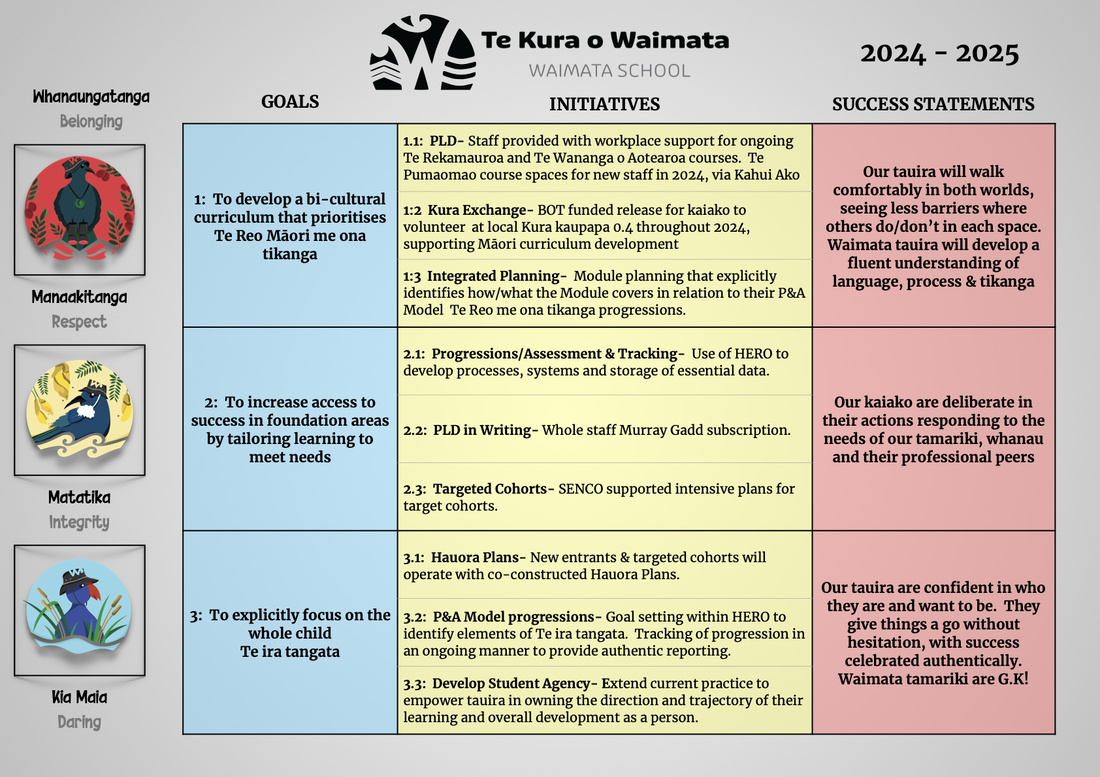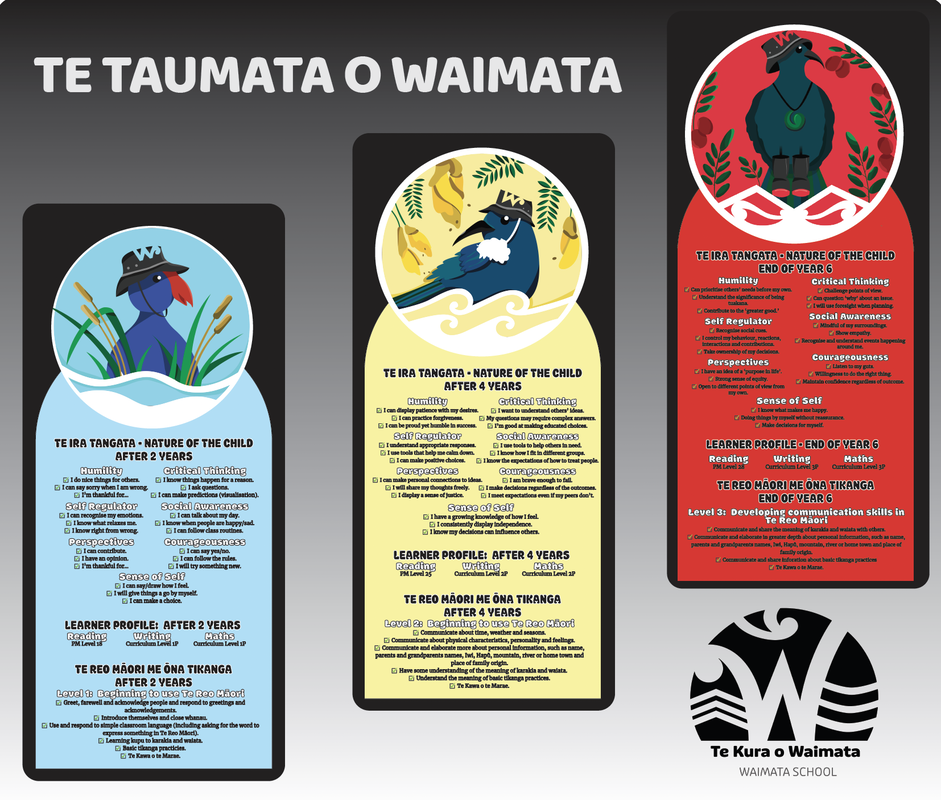Te Kura O Waimata Strategic Plan 2024 - 2025
|
|
How we roll |
|
Upon our return to kura following the COVID lockdown, we spent a significant amount of time reflecting and analysing the lessons that this global event brought to our attention. The following is potentially the most obvious point of difference of ‘How’ we re-prioritised what was most important for our students
and the unique perspectives that we had to embrace to achieve our goals. Practising pragmatism in our profession by listening to our professional voice even if the status quo tells us different. Creating time via prioritisation and trusting the process of natural development. At kura this looks like... • No bells or predefined set learning blocks/times and breaks. Teachers can strike ‘while the iron is hot’ and students can manage their breaks to best maximise their focus. • Te Whare Tapa Wha Learning Module’s. • Progress & Achievement Model developed to have benchmarks no closer than 24 months apart, as not every child walks, writes their name, says their first word on the exact same day, therefore why do we expect students learning to follow the same suit. |
Our now |
|

Our move to collaborative teaching teams in 2016 provided us with opportunities
that to this day continue to exceed our expectations;
• Greatly increased diagnosis of academic, social, behavioural, relationship
issues with multiple teachers in each class.
• An abundance of innovative thinking due to having a professional peer
to bounce ideas off throughout the day.
• Flexible learning structures that allow for adjustments to maximise opportunities,
by having another teacher to share the responsibility.
• More thorough communication systems and opportunities to connect for all
stakeholders with two teachers in each learning space.
• Greater sense of what is possible with a larger team to support ‘big’ tasks that could be daunting if attempting them on your own.
|
|
Level 3 Māori Immersion |
|
All schools working from the New Zealand Curriculum are obligated to deliver contextual learning from both ‘English’ and Te Ao Maori worldviews in line with principles o Te Tiriti o Waitangi. Regardless of a schools ethnic make up, or the value a community or whanau places on Te Ao Māori, the expectation to deliver contextual learning from a Māori world view is still something that we have to meet as a compliance.
Treaty of Waitangi principle "The curriculum acknowledges the principles of the Treaty of Waitangi, and the bicultural foundations of Aotearoa New Zealand. All students have the opportunity to acquire knowledge of te reo Māori me ōna tikanga.” (sourced from the New Zealand Curriculum). How we have chosen to meet the expectations of this principle can best be incapsulated like this. When a student/whanau/stakeholder of any kind walks in to our school for the first time they will not have to choose whether to learn from a Pakeha/Kiwi world view or a Māori world view, because we have challenged ourselves to ensure that we deliver the New Zealand Curriculum from both perspectives. Furthermore we have taken the steps to ensure that we don’t fragment this concept into time tables, or set periods for each. We instead choose to operate in a way that acknowledges both world views in all that we do, not sacrificing one for the other, or even attempting to be something we aren’t. We just do our all everyday to best represent and uphold the integrity of the bi- cultural foundations of Aotearoa New Zealand. |




